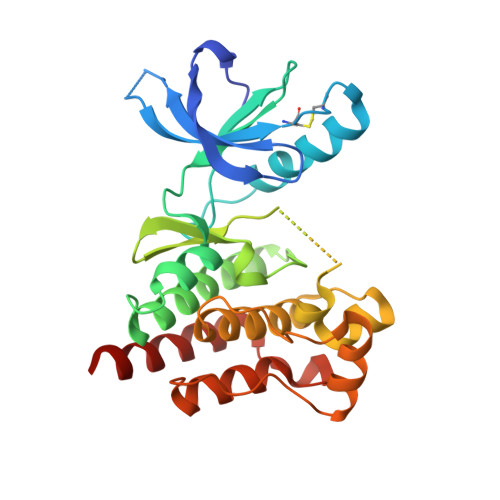Fragment-based discovery of new highly substituted 1H-pyrrolo[2,3-b]- and 3H-imidazolo[4,5-b]-pyridines as focal adhesion kinase inhibitors.
Heinrich, T., Seenisamy, J., Emmanuvel, L., Kulkarni, S.S., Bomke, J., Rohdich, F., Greiner, H., Esdar, C., Krier, M., Gradler, U., Musil, D.(2013) J Med Chem 56: 1160-1170
- PubMed: 23294348
- DOI: https://doi.org/10.1021/jm3016014
- Primary Citation of Related Structures:
4GU6, 4GU9 - PubMed Abstract:
Focal adhesion kinase (FAK) is considered as an attractive target for oncology, and small-molecule inhibitors are reported to be in clinical testing. In a surface plasmon resonance (SPR)-mediated fragment screening campaign, we discovered bicyclic scaffolds like 1H-pyrazolo[3,4-d]pyrimidines binding to the hinge region of FAK. By an accelerated knowledge-based fragment growing approach, essential pharmacophores were added. The establishment of highly substituted unprecedented 1H-pyrrolo[2,3-b]pyridine derivatizations provided compounds with submicromolar cellular FAK inhibition potential. The combination of substituents on the bicyclic templates and the nature of the core structure itself have a significant impact on the compounds FAK selectivity. Structural analysis revealed that the appropriately substituted pyrrolo[2,3-b]pyridine induced a rare helical DFG-loop conformation. The discovered synthetic route to introduce three different substituents independently paves the way for versatile applications of the 7-azaindole core.
Organizational Affiliation:
Merck Serono Research, Merck KGaA , 64271 Darmstadt, Germany. [email protected]















